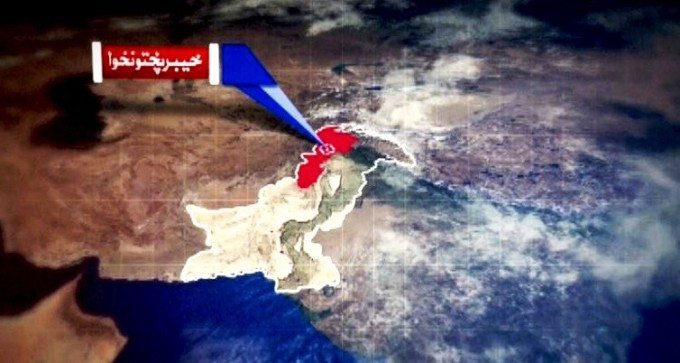PESHAWAR: The merger of erstwhile FATA with Khyber Pakhtunkhwa province was indeed a historic step by the democratic government of Pakistan Tehreek-e-Insaf (PTI) but the more challenging task achieved successfully by the government was to make a population weary of conflict, displacement and over a century old draconian Frontier Crimes Regulations (FCR), the part of nationwide democratic setup.
After the passage of the 25th constitutional amendment, the KP government wholeheartedly accepted the tribal districts despite having limited resources and challenging law and order situation in the province including the tribal areas.
The merger thus raised significant public expectations as the tribal people had suffered a lot in terms of human lives, properties and business. Many people have had their homes and livelihoods destroyed and they wanted to be a part of the democratic process.
In such circumstances any delay or mismanagement could have risen questions on the decision of the ruling PTI’s government therefore, under a comprehensive plan, at first the government repealed all the draconian laws including FCR which were introduced by British rulers in 1897 and gave land titling rights to the tribal people and under the administrative reforms in June 2018 gave the status of districts and subdivisions to all Frontier regions.
Assistant Professor Areas Study Center University of Peshawar Zahid Hussain a resident of Kurram tribal district talking to APP highly appreciated the merger of tribal districts in KP and said that prior to the landmark initiative the tribal people were not enjoying rights like normal citizens of Pakistan.
He said that the erstwhile FATA was even lacking basic facilities like education, health and communication network in their areas while on the other hand the draconian FCR had made their lives miserable, adding that since they had no representation in the provincial assembly therefore they could not be heard.
The PTI government gave the right to vote to over 2.8 million people of tribal districts soon after the merger so that the tribal people could elect their own representatives for the provincial assembly who could raise voice for their rights.
As such it was the impact of the ruling party’s decision of merger that PTI won the hearts of tribal people and its nominees secured a majority of the seats in by-elections in the newly merged districts.
Assistant Professor of Political Science University of Peshawar Dr. Sami Raza termed FATA merger a victory for the true spirit of democracy, adding that tribal districts were deprived from rights of the advanced world.
In order to transform the lives of tribal people by creating opportunities, the government allocated a huge development budget for the merged districts and initiated accelerated and transformative socio-economic development projects in these areas through improved planning, implementation and innovation, he said.
Despite limited resources, KP government did its best for rapid development in merged districts and spent Rs 24 billion on 127 development schemes in 17 sectors during the fiscal year 2019-20, an official document of KP Government revealed.
According to KP government spokesman Kamran Bangash under the Accelerated Implementation Programme (AIP) for development of tribal districts, Rs 24 billion was spent during the financial year 2019-20.
Under the 10-year strategy, work would be done under the AIP for the first three years, he said, adding that Planning and Development (P&D) had launched a GIS system to check actual position of development projects which helped in viewing the geographical position of the projects and decision making.
In the wake of the merger of tribal districts, he said, the last two years had been very challenging for P&D Department but due to effective strategy, all challenges had been met effectively and a network of development projects had been laid in the tribal districts.
An official document of the KP government revealed that an amount of Rs12.265 million was spent on the relief and rehabilitation sector in the merged districts with a view to help the displaced people resettle in their respective areas and restore their businesses without any inconvenience.
Moreover, around seven trade routes were restored and improved at an expense of Rs1.869 billion to revive the commercial activities in the area, the document said.
Furthermore the health sector being at the top most priority of the government was injected with Rs2.6 billion. Sehat Insaf Card, the flagship project of the PTI government was first launched in the tribal areas to provide free of charge medical facilities to tribal people at the best hospitals of the country.
Similarly in the education sector the government spent Rs 2.9 billion on primary and secondary education.
“68.24 per cent of the tribal population was not having access to quality education in ex-FATA,” said Sulman Shah, a MPhil scholar who had conducted his research on the subject.
Besides this, in order to encourage people to acquire education, Rs0.39 billion were disbursed for providing school bags and stationery, Rs0.23 billion for building play areas and Rs0.31 billion for free textbooks.
Despite the merger the provincial government kept the erstwhile FATA quota in education sector and Government jobs to provide additional opportunities to tribal youth.
Considerable amounts had also been spent on the agriculture and irrigation sectors in view of the fact that these sectors generate sizable incomes. Under the AIP, around Rs1.5 billion were spent on irrigation schemes, including Rs0.85 billion on Gomal Zam Dam and Rs0.17 billion on the restoration of irrigation channels.
The government has also paid attention to improving electricity availability in these districts, and Rs6.32 billion were spent on this sector. Under the AIP, the government had allocated Rs142 billion, but it could utilise only Rs24 billion, or 16.9% of the amount because the government was facing challenges after the merger of tribal districts due to unavailability of proper record.
Under the broader goal of strengthening service delivery the government in collaboration with UNDP had developed socio-economic profiles of 702 Village Councils/Neighborhood Councils in seven districts of Bajaur, Mohmand, Khyber, Orakzai, Kurram, North Waziristan, South Waziristan and six Tehsil sub-divisions of Darazinda, Bittani, Jandola, Wazir, Dera Adam Khel and Hassan Khel in the Merged Areas.
The purpose of profiling was to engage the local communities’ plans to put together effective Village Development Plans for Local Councils and promote improved local governance in the merged areas.
Professor Dr Basharat, a resident of ex-FR (Frontier Region) of Kohat expressing his view on the FATA merger said that the judicial courts and Police Stations had been setup in the tribal districts and Levies, Khasadar, FC, and Armed forces were involved in maintaining peace in tribal region.
He said unlike settled areas the disputes were resolved through a traditional Jirga system in the merged districts and the government would have to convince the tribal people through legislators to use the new judicial system for resolution of their disputes.
He appreciated the KP government for giving rights to local people on mineral resources and said it would usher a new era of prosperity in the region besides giving a sense of ownership to the local people on land.
He emphasized upon the promotion of tourism in the tribal districts as a way to boost the economy, adding that these areas despite their natural beauty and potential for tourism lacked basic facilities like accommodation, road and communication network and security.
Newspakistan.tv | YouTube Channel











